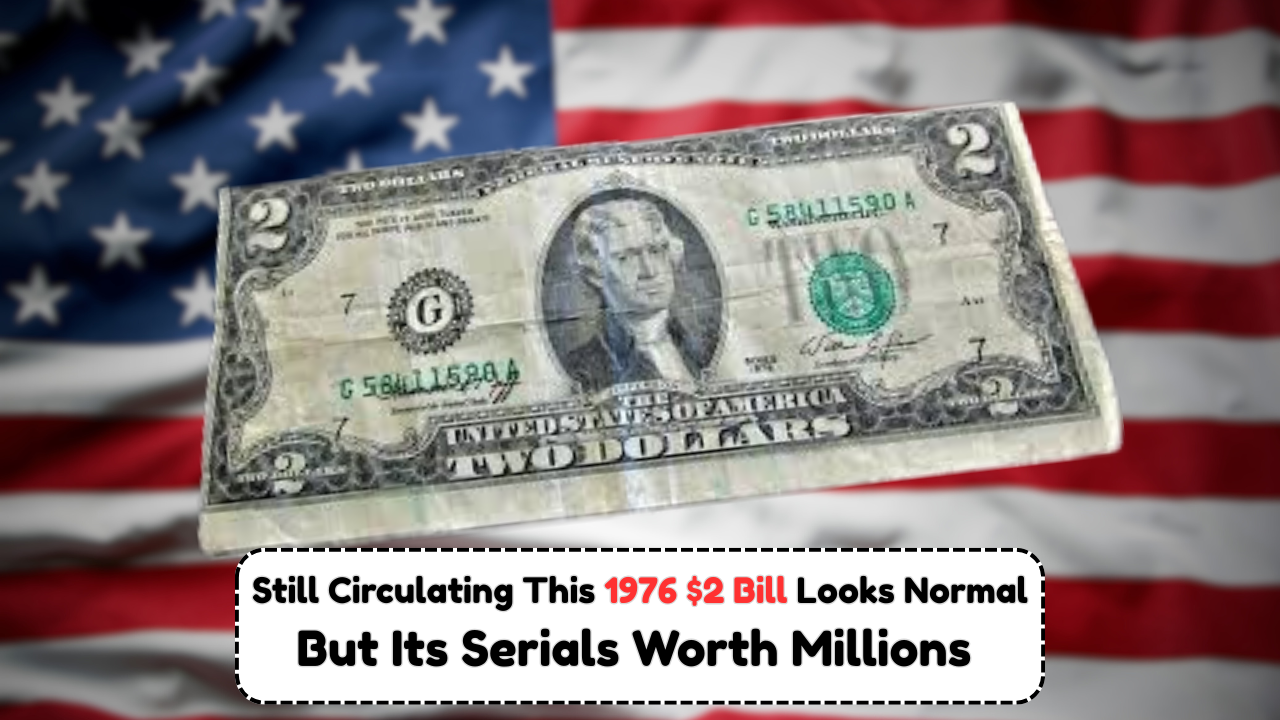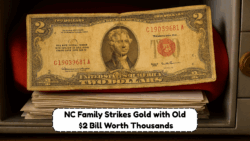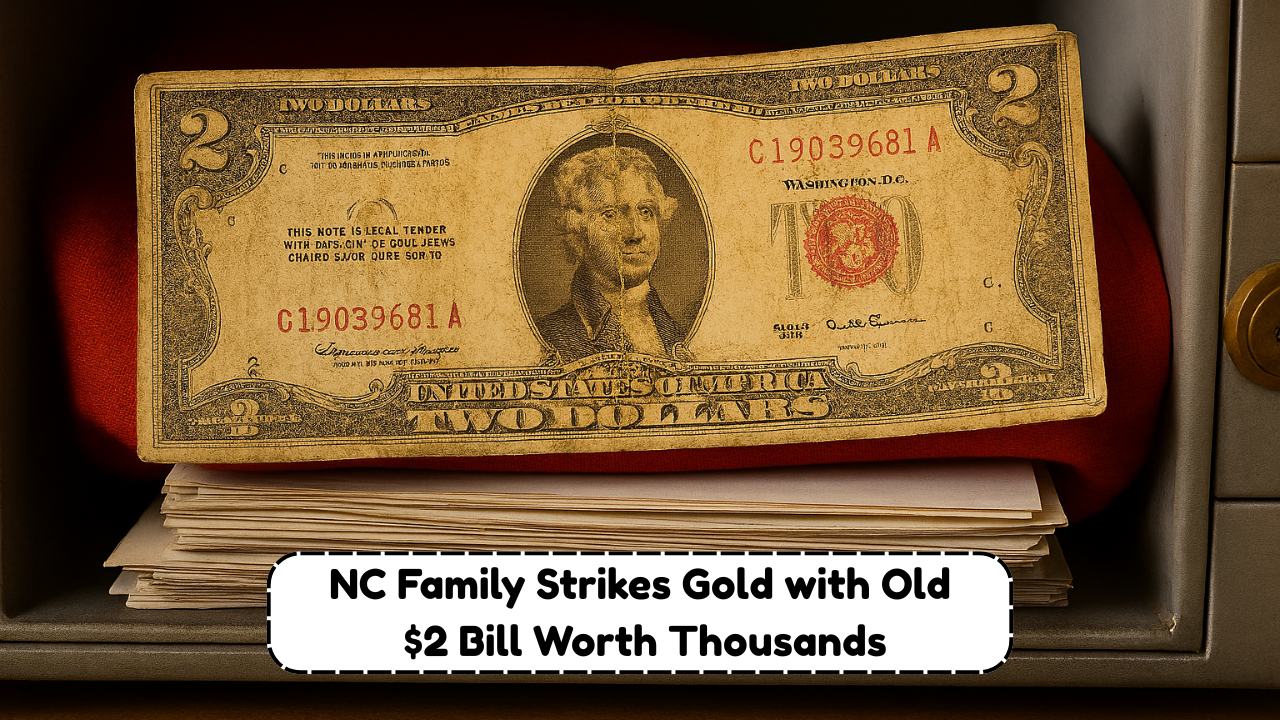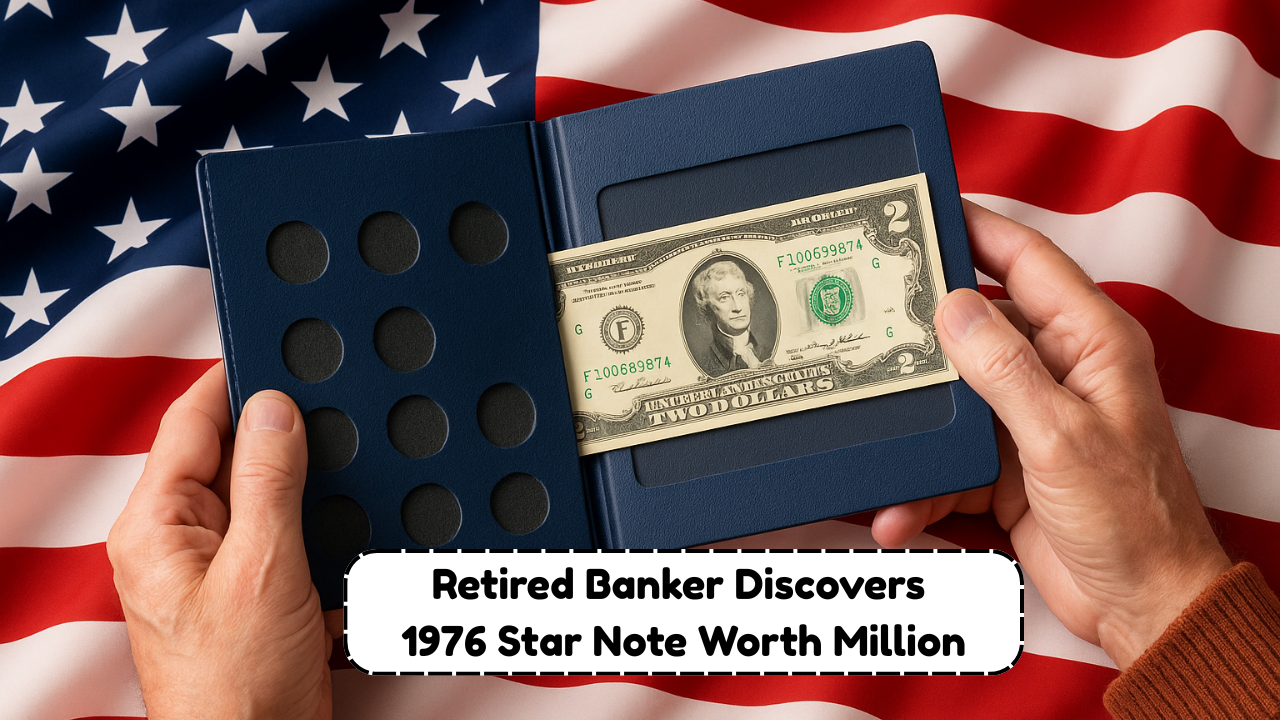In an astonishing discovery, a man from Pennsylvania recently found several 1976 Bicentennial $2 bills featuring an ultra-rare “ladder” serial number pattern — a find that has stunned the numismatic world and sparked renewed interest in vintage U.S. currency. Collectors have long sought after these sequentially patterned serial numbers, often willing to pay thousands — and in this case, millions — for perfectly aligned ladder examples.
If you’re holding onto old currency, particularly from the 1976 Bicentennial series, learning how to identify these special serial patterns could be your ticket to uncovering a hidden fortune.
What Is a Ladder Serial Number and Why Is It So Valuable?
A “ladder” serial number is a rare and visually satisfying numeric sequence where the digits appear in perfect ascending or descending order — like climbing a ladder. Due to their rarity and visual appeal, these notes are in extremely high demand among serious collectors.
Characteristics of Ladder Serial Numbers
| Serial Number Pattern | Type | Example | Rarity Level |
|---|---|---|---|
| Ascending Ladder | Full | 12345678 | Extremely Rare |
| Descending Ladder | Full | 87654321 | Extremely Rare |
| Partial Ladder | 6+ Digits | 01234566 | Rare |
| Repeating Ladder | Custom | 12341234 | Very Rare |
| Star Ladder | With Star | 12345678* | Ultra Rare |
True ladders consist of all eight digits in exact order, and finding one from the 1976 $2 Bicentennial series makes it even more extraordinary.
The 1976 Bicentennial $2 Bill – A Unique Historical Note
The 1976 $2 bill was released to commemorate the United States Bicentennial and reintroduced the denomination with a distinctive design featuring the signing of the Declaration of Independence. Though millions were printed, very few featured specialty serial numbers like ladders.
Notable Features of the 1976 $2 Bill
| Feature | Detail |
|---|---|
| Series Year | 1976 |
| Front Design | Thomas Jefferson |
| Back Design | Signing of the Declaration of Independence |
| Seal Color | Green |
| Bill Type | Federal Reserve Note |
| Size | Standard U.S. currency dimensions |
| Collector Interest | High for unique serial numbers and star notes |
Most Americans saved these notes as commemorative items, but the true value lies in rare serial patterns.
The Pennsylvania Discovery – What Makes It Historic?
The man from Pennsylvania discovered not one, but multiple full ladder serial number $2 bills from 1976. These notes had been sitting undisturbed in a safety deposit box since the 1980s. Upon expert appraisal, the bills were deemed authentic, uncirculated, and among the rarest known examples of currency serials in U.S. history.
Why This Find Is Groundbreaking
- Full ascending ladder patterns like 12345678 are almost never released into circulation.
- Combining the ladder with the 1976 Bicentennial issue makes it historically unique.
- Appraised value for the best-preserved ladder note: over $2.1 million.
These notes are now considered national collector treasures and have generated major buzz across auctions and collector communities.
How to Spot a Ladder Serial Number
Identifying a ladder serial number is fairly straightforward once you understand the sequence logic. The key is to look for exact consecutive order in the serial digits — either ascending or descending.
Step-by-Step Guide to Spotting Ladder Patterns
- Locate the serial number: Usually found on the top right and bottom left of the bill.
- Check for 8-digit sequence: Full ladders include all digits with no skips.
- Scan for order:
- Ascending: 12345678
- Descending: 87654321
- Ignore prefixes/suffixes: Focus on the middle 8 digits if letters are present.
- Look for stars: A star at the end increases rarity significantly.
Examples of Ladder vs Non-Ladder Serial Numbers
| Serial Number | Ladder Pattern? | Notes |
|---|---|---|
| 12345678 | Yes | Full ascending ladder |
| 87654321 | Yes | Full descending ladder |
| 23456789 | No | Not all 8 digits in range |
| 12345677 | No | Repeats, not sequential |
| 12345678* | Yes | Star ladder – extremely rare |
A true ladder serial is instantly recognizable and visually satisfying — and potentially worth a fortune.
How Much Are Ladder Serial $2 Bills Worth?
The value of a 1976 $2 bill with a ladder serial number depends on several factors: whether the ladder is full or partial, if the note is uncirculated, and if it includes a star symbol.
Estimated Values for Ladder Serial 1976 $2 Bills
| Serial Type | Circulated Value | Uncirculated Value | Star Note Bonus |
|---|---|---|---|
| Full Ascending | $15,000–$120,000 | $150,000–$2M+ | +50–100% |
| Full Descending | $10,000–$100,000 | $120,000–$1.5M+ | +50–100% |
| Partial Ladder | $500–$2,500 | $3,000–$15,000 | +25% |
| Repeating Ladder | $300–$1,200 | $1,500–$7,000 | +10% |
Notes with perfect paper quality and exceptional alignment can command premiums at top auction houses.
Where to Find or Sell Ladder Serial Number Bills
While ladder serials are rare, there are ways to improve your chances of finding one — and trusted avenues for selling if you do.
Where to Look for Rare Serial Numbers
- Family safety deposit boxes
- Old paper money collections
- Estate sales and auctions
- Online collector marketplaces (eBay, Heritage)
- Bank note dealers and currency expos
Where to Sell a Valuable Serial Number Note
- Certified currency dealers
- Numismatic auction houses
- Grading services (PMG, PCGS) prior to sale
- Collector forums and specialist Facebook groups
Always have high-value notes professionally graded before attempting to sell.
Tips for Collecting Serial Number Currency
If this story has sparked your interest in collecting rare serial numbers, here’s how to start smart:
Collector’s Checklist
- Focus on notes with fancy, rare, or repeating serials
- Handle bills with clean hands or gloves
- Use archival-safe currency holders for storage
- Research serial patterns and trends in collector guides
- Join currency collecting forums for tips and appraisal help
Ladder notes are just one part of the larger world of “fancy serial number collecting,” a niche with huge interest and high value.
The Pennsylvania man’s discovery proves that even a small detail — like the arrangement of serial digits — can transform a common $2 bill into a million-dollar collectible. Ladder serial numbers are exceedingly rare, and when paired with a historic issue like the 1976 Bicentennial $2 bill, they become priceless artifacts.
Take a moment to inspect the serial numbers on your old paper money — you just might be sitting on a fortune without even realizing it.
Frequently Asked Questions (FAQs)
What is a ladder serial number?
A ladder serial number features digits in exact ascending (12345678) or descending (87654321) order. These patterns are rare and highly collectible.
How rare is a full ladder serial number?
Extremely rare — out of billions printed, only a handful exist. The odds of getting a perfect ladder serial are one in 100 million or more.
Are ladder serial numbers more valuable on 1976 $2 bills?
Yes, pairing a ladder serial number with a 1976 Bicentennial $2 bill significantly boosts its historical and collector value.
What’s a star ladder note?
It’s a ladder serial number note that ends with a star (*), indicating it was a replacement note. This adds significant rarity and value.
How much can a ladder $2 bill be worth?
Depending on condition and uniqueness, values can range from a few hundred to over $2 million for a perfect, uncirculated example.
Can I find a ladder serial number in circulation?
It’s unlikely, but not impossible. Most are discovered in old collections, vaults, or newly issued packs examined by serious collectors.
Should I get my ladder serial bill graded?
Yes. Professional grading adds credibility, increases resale value, and protects your note’s condition long-term.
Where can I learn more about serial number collecting?
Join numismatic groups online, read guides from PMG or PCGS, or attend currency expos to connect with other collectors and experts.







